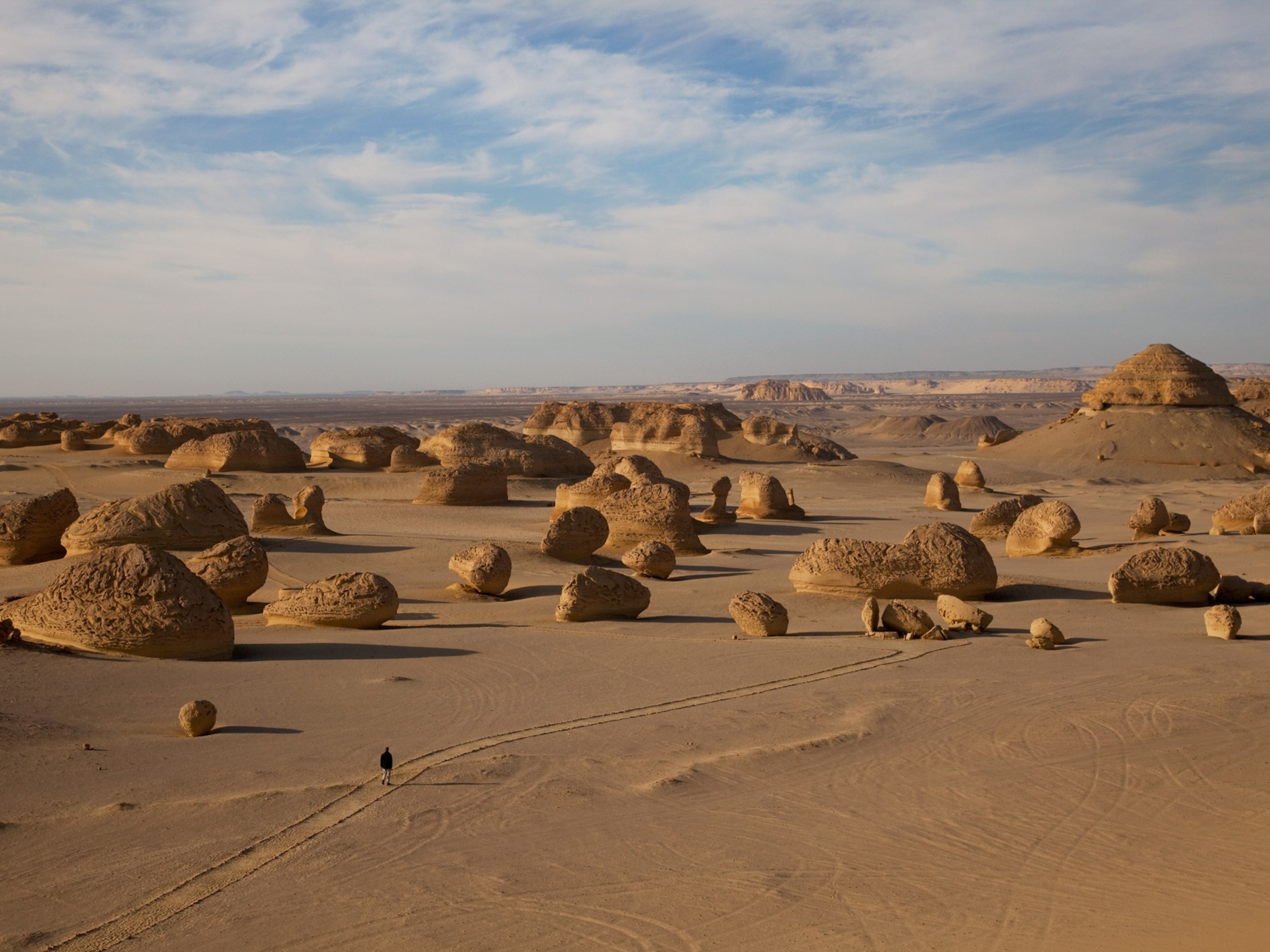The Cambrian period, part of the Paleozoic era, produced the most intense burst of evolution ever known. The Cambrian Explosion saw an incredible diversity of life emerge, including many major animal groups alive today. Among them were the chordates, to which vertebrates (animals with backbones) such as humans belong.
What sparked this biological bonanza isn't clear. It may be that oxygen in the atmosphere, thanks to emissions from photosynthesizing cyanobacteria and algae, were at levels needed to fuel the growth of more complex body structures and ways of living. The environment also became more hospitable, with a warming climate and rising sea levels flooding low-lying landmasses to create shallow, marine habitats ideal for spawning new life-forms.
Cambrian Explosion
Nevertheless, the scale of the Cambrian Explosion is likely exaggerated due to the proliferation of hard-bodied animals that fossilized much more readily than their soft-bodied precursors. These included brachiopods, which lived in shells resembling those of clams or cockles, and animals with jointed, external skeletons known as arthropods—the ancestors of insects, spiders, and crustaceans. These toughened-up creatures represented a crucial innovation: hard bodies offering animals both a defense against enemies and a framework for supporting bigger body sizes.

The iconic arthropods of the Cambrian were the trilobites, which left a huge number of fossils. Trilobites had flattened, segmented, plated bodies that helped to protect them in seas that were increasingly filled with predators. With many varieties and sizes—they ranged from a millimeter to more than 2 feet (0.6 meters) in length—trilobites proved among the most successful and enduring of all prehistoric animals. More than 17,000 species are known to have survived until the mega-extinction that ended the Permian period 251 million years ago.
A predator of the Cambrian was the giant, shrimplike Anomalocaris, which trapped its prey in fearsome mouthparts lined with hooks. Even stranger was the five-eyed Opabinia, which caught its victims using a flexible clawed arm attached to its head. These animals hunted along the seabed, where colonies of archaic sponges grew on organic, mineral structures formed by the activity of cyanobacteria. The sponges added to these reef habitats by building supporting skeletons from calcium carbonate, which they collected from the water.
The earliest known primitive chordate is Pikaia gracilens, a wormlike creature that swam in middle Cambrian seas. Fossils found in the Burgess Shale of British Columbia show traces of a notochord (a rodlike primitive backbone), a significant step in the evolution of vertebrates.
Evolutionary Update
Cambrian sediments found in Canada, Greenland, and China have yielded rarely fossilized soft-bodied creatures such as marine worms buried during undersea mud avalanches. Representing the oldest known backboned animals with living relatives, the fossils showed that our vertebrate ancestors entered the evolutionary story some 50 million years earlier than previously thought.
The end of the Cambrian saw a series of mass extinctions during which many shell-dwelling brachiopods and other animals went extinct. The trilobites also suffered heavy losses.
Related Topics
Go Further
Animals
- How can we protect grizzlies from their biggest threat—trains?How can we protect grizzlies from their biggest threat—trains?
- This ‘saber-toothed’ salmon wasn’t quite what we thoughtThis ‘saber-toothed’ salmon wasn’t quite what we thought
- Why this rhino-zebra friendship makes perfect senseWhy this rhino-zebra friendship makes perfect sense
- When did bioluminescence evolve? It’s older than we thought.When did bioluminescence evolve? It’s older than we thought.
- Soy, skim … spider. Are any of these technically milk?Soy, skim … spider. Are any of these technically milk?
Environment
- Are the Great Lakes the key to solving America’s emissions conundrum?Are the Great Lakes the key to solving America’s emissions conundrum?
- The world’s historic sites face climate change. Can Petra lead the way?The world’s historic sites face climate change. Can Petra lead the way?
- This pristine piece of the Amazon shows nature’s resilienceThis pristine piece of the Amazon shows nature’s resilience
- Listen to 30 years of climate change transformed into haunting musicListen to 30 years of climate change transformed into haunting music
History & Culture
- Meet the original members of the tortured poets departmentMeet the original members of the tortured poets department
- Séances at the White House? Why these first ladies turned to the occultSéances at the White House? Why these first ladies turned to the occult
- Gambling is everywhere now. When is that a problem?Gambling is everywhere now. When is that a problem?
- Beauty is pain—at least it was in 17th-century SpainBeauty is pain—at least it was in 17th-century Spain
Science
- Here's how astronomers found one of the rarest phenomenons in spaceHere's how astronomers found one of the rarest phenomenons in space
- Not an extrovert or introvert? There’s a word for that.Not an extrovert or introvert? There’s a word for that.
- NASA has a plan to clean up space junk—but is going green enough?NASA has a plan to clean up space junk—but is going green enough?
- Soy, skim … spider. Are any of these technically milk?Soy, skim … spider. Are any of these technically milk?
Travel
- Dina Macki on Omani cuisine and Zanzibari flavoursDina Macki on Omani cuisine and Zanzibari flavours
- How to see Mexico's Baja California beyond the beachesHow to see Mexico's Baja California beyond the beaches
- Could Mexico's Chepe Express be the ultimate slow rail adventure?Could Mexico's Chepe Express be the ultimate slow rail adventure?





